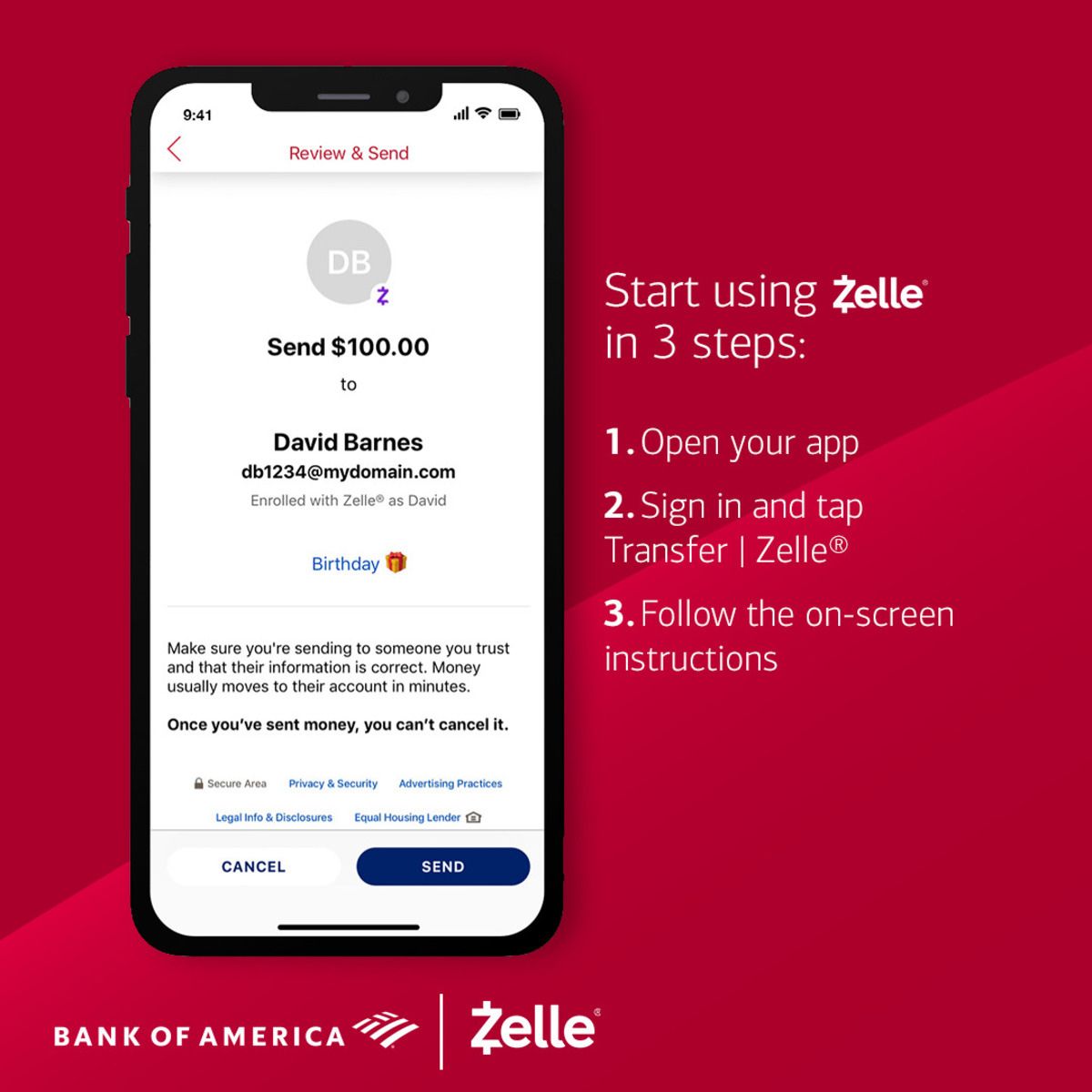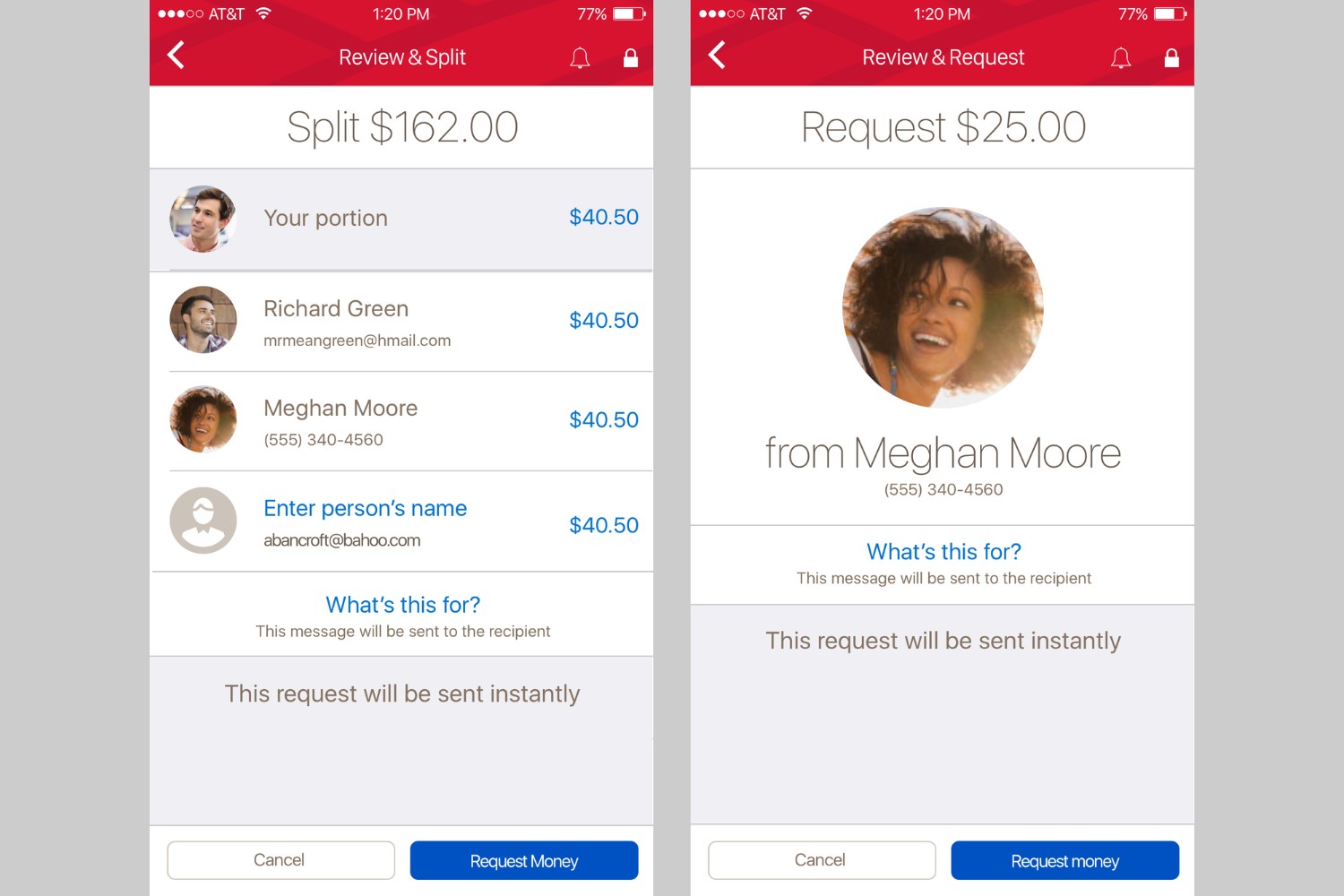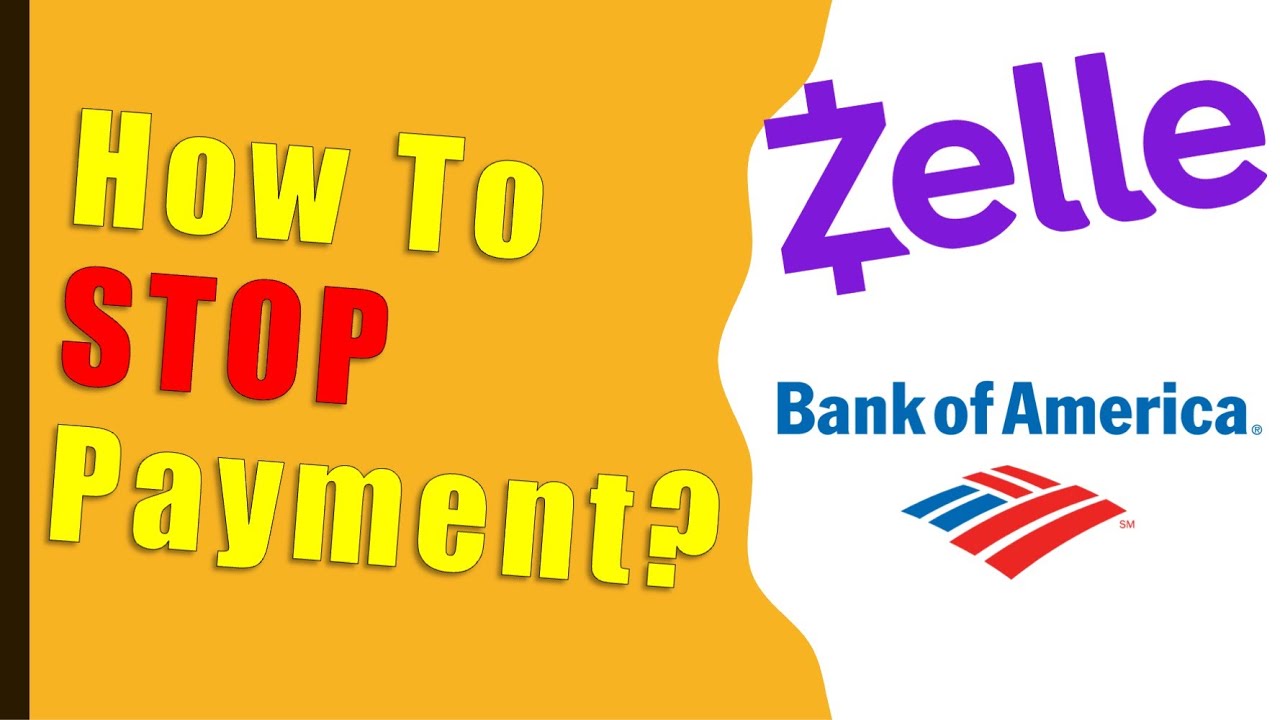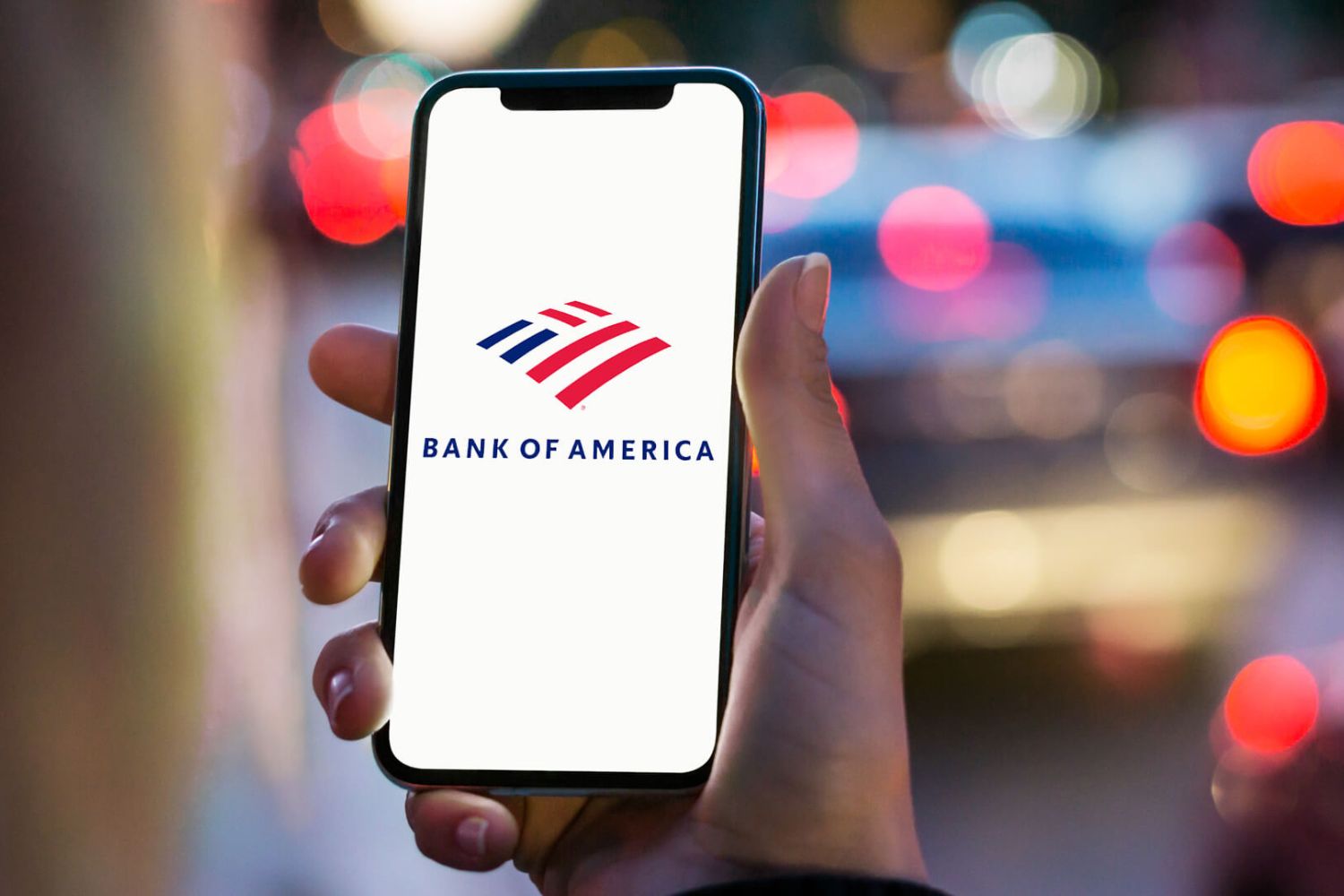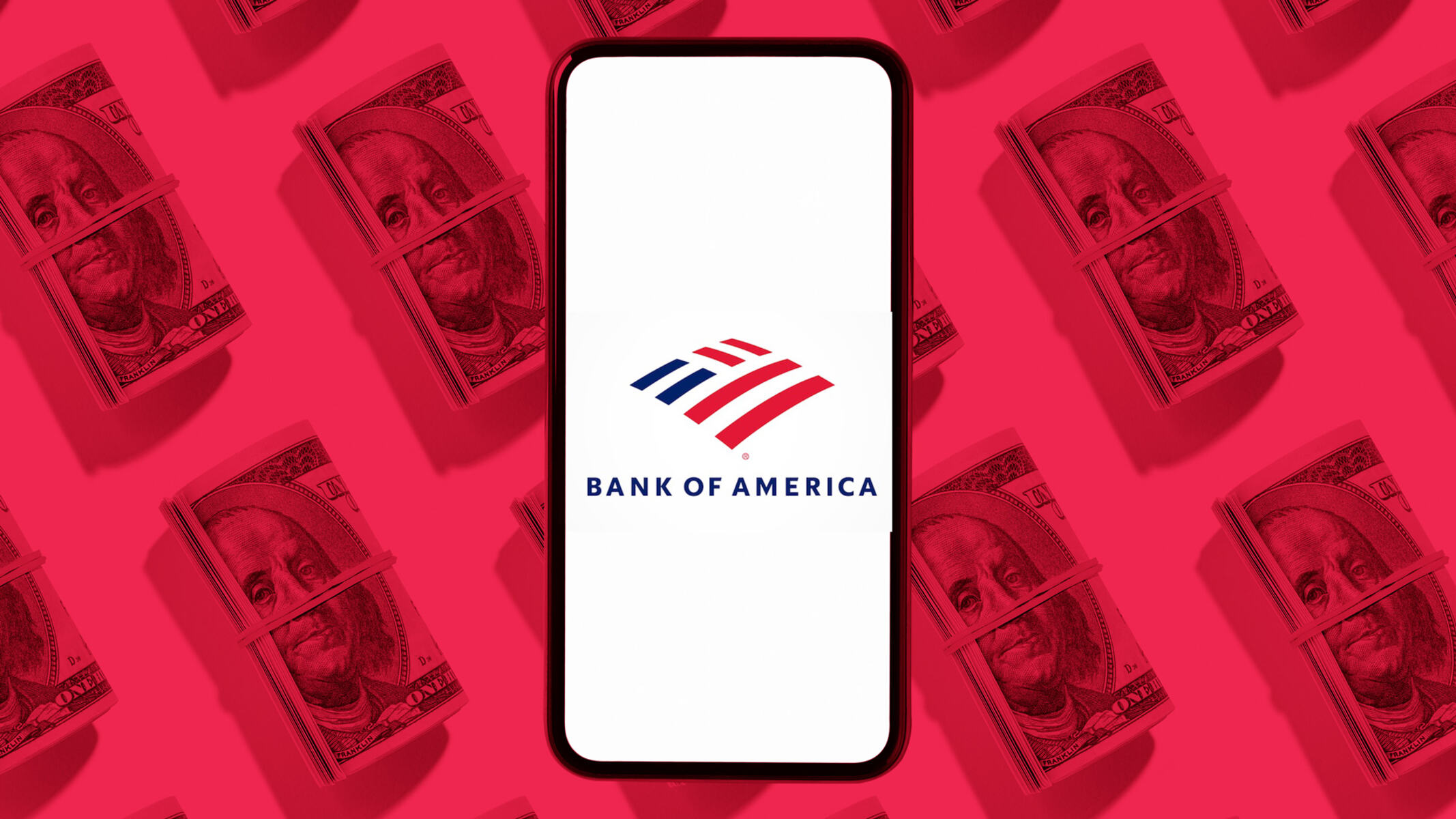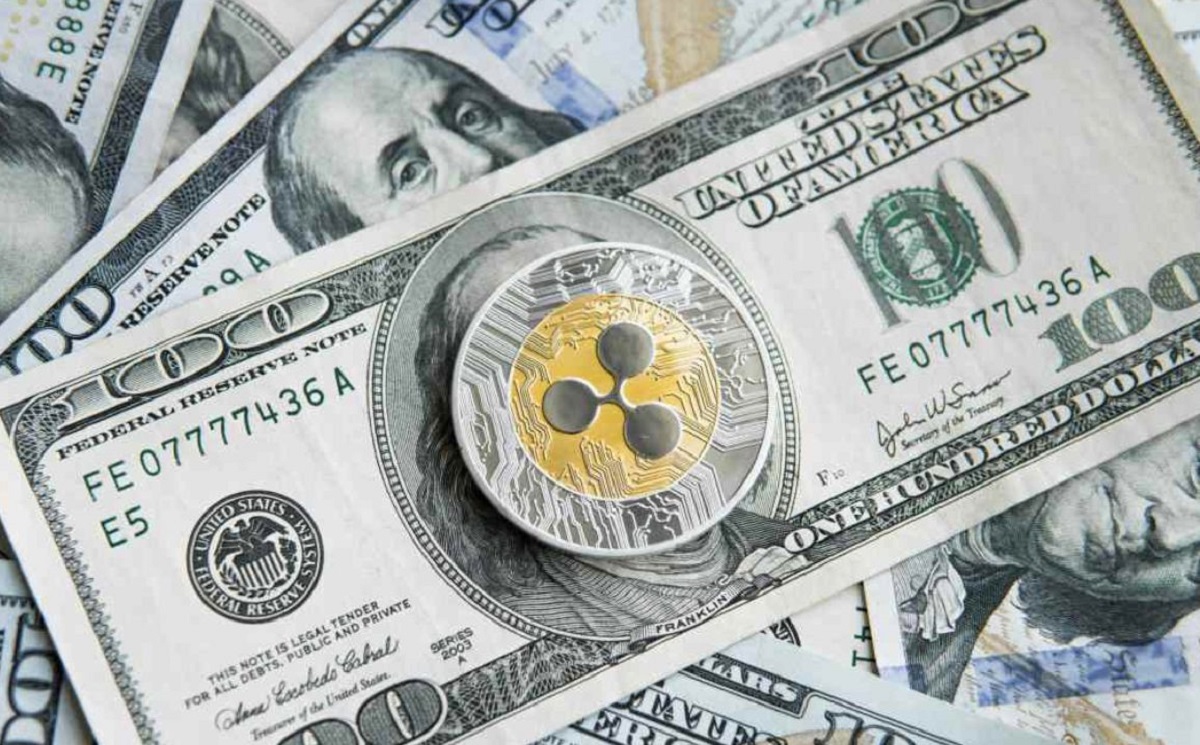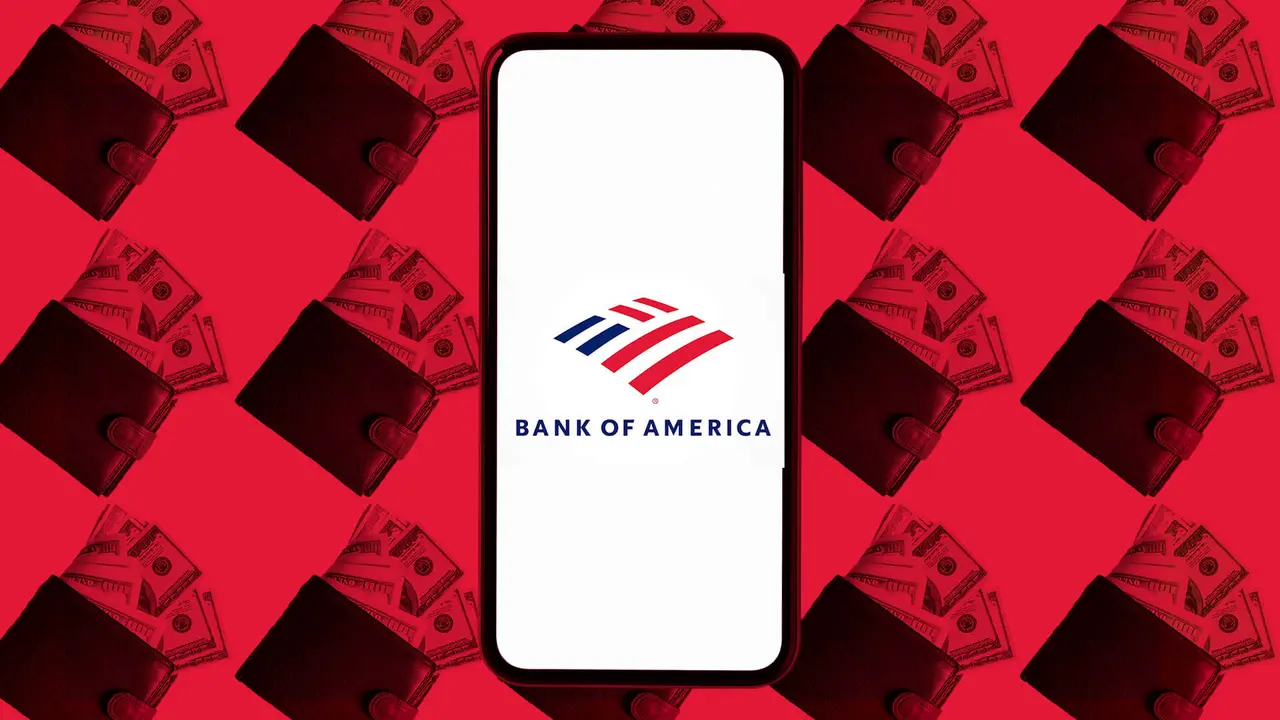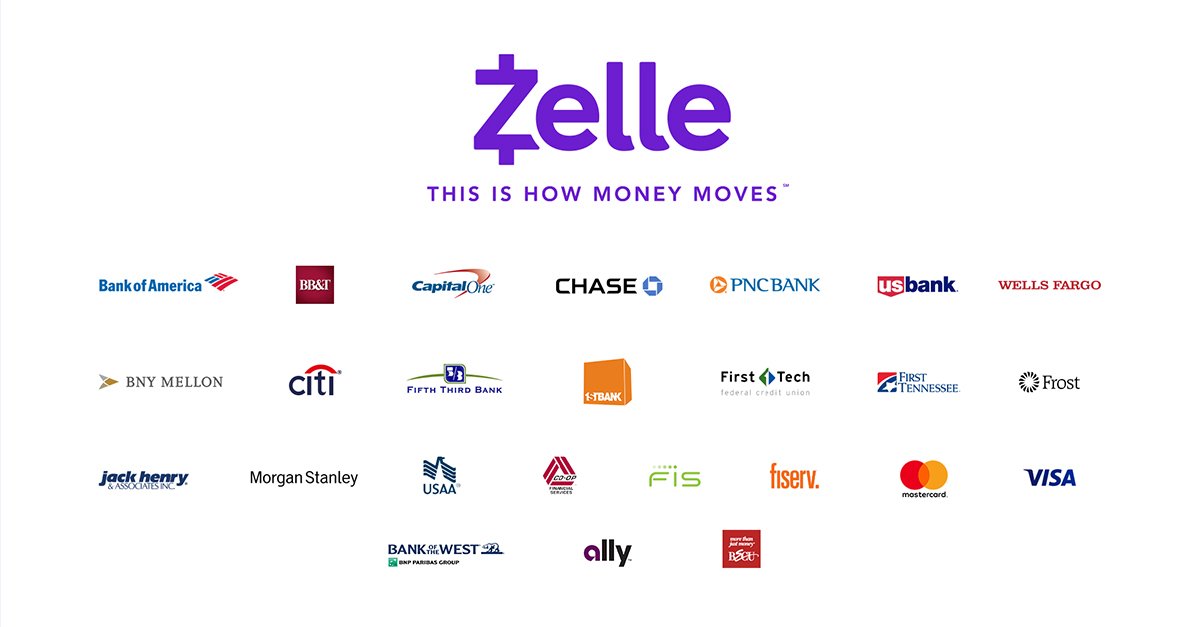Introduction
Welcome to our guide on how to make a money transfer to Bank of America. Whether you’re looking to transfer funds from another bank, send money to Bank of America from abroad, or make an online or in-person transfer, this article will provide you with all the information you need to get started.
When it comes to money transfers, it’s important to consider various factors such as transfer options, fees and charges, transfer time, and security measures. In this guide, we will discuss these aspects in detail, ensuring that you have a clear understanding of the steps involved in making a successful money transfer to Bank of America.
Bank of America offers a range of convenient transfer options to suit your needs, whether you prefer to transfer funds online or visit a branch in person. Understanding these options will help you determine the most suitable method for your transfer.
Additionally, if you are transferring money to Bank of America from another bank, you’ll need to familiarize yourself with the process involved in making a successful transfer. This guide will provide you with step-by-step instructions to ensure a smooth transfer experience.
For those who need to transfer money to Bank of America from abroad, there are certain considerations to keep in mind, such as exchange rates and international transfer fees. We will delve into these details to help you navigate the process effectively.
Whether you choose to transfer money to Bank of America online or in-person, you’ll want to be aware of any fees or charges associated with the transfer. We will outline the various fees that may apply, giving you a clear understanding of the costs involved.
Lastly, we understand the importance of security when it comes to money transfers. Bank of America implements robust security measures to protect your funds and personal information. We will discuss the security features in place to give you peace of mind throughout the transfer process.
By the end of this guide, you’ll have all the information you need to confidently make a money transfer to Bank of America. Let’s dive in and explore the various transfer options, fees, and security measures to ensure a seamless and secure transfer experience.
Things to Consider before Making a Money Transfer
Before proceeding with a money transfer to Bank of America, there are a few important factors to consider. By understanding these considerations, you can ensure a smooth and hassle-free transfer process.
Firstly, it’s essential to determine the purpose and urgency of the transfer. Are you sending money to Bank of America for personal or business reasons? Is the transfer time-sensitive? Depending on your specific needs, you can choose the most appropriate transfer option that aligns with your requirements, whether it’s a same-day transfer or a more cost-effective but slower transfer method.
Next, you’ll want to consider the fees and charges associated with the transfer. Different transfer options may have varying fees, and some transfers may incur additional charges depending on the origin and destination of the funds. By understanding the fee structure, you can evaluate the cost-effectiveness of each transfer method and select the most suitable one for your budget and needs.
Another crucial aspect to consider is the exchange rate if you are making an international money transfer to Bank of America. Currency exchange rates fluctuate, and different transfer services may offer varying rates. It’s advisable to compare exchange rates from different providers to ensure that you get the best value for your money.
Additionally, it’s important to choose a transfer method that provides convenience and ease of use. Bank of America offers online and in-person transfer options, giving you the flexibility to choose the method that suits your preference. Online transfers can be completed from the comfort of your home or office, while in-person transfers allow for face-to-face assistance and guidance.
Security is another critical factor when making a money transfer. Ensure that the transfer service you choose has robust security measures in place to protect your personal information and funds. Bank of America is known for its comprehensive security features, providing peace of mind throughout the transfer process.
Lastly, consider any additional services or features that you may require for your money transfer. Are you looking for the ability to track your transfer? Do you need access to customer support for assistance with your transfer? By identifying these additional needs, you can prioritize transfer options that offer the desired services and features.
By taking these factors into account, you can make an informed decision when making a money transfer to Bank of America. Understanding the purpose, fees, exchange rates, convenience, security, and additional services will enable you to choose the most suitable transfer option for your needs. Now that you have a clear understanding of the considerations involved, let’s explore the various transfer options available for Bank of America.
Transfer Options Available for Bank of America
Bank of America offers a variety of transfer options to cater to the diverse needs of its customers. Whether you prefer to transfer funds online or make an in-person transaction, Bank of America provides convenient and secure methods to transfer money to and from your account.
1. Online Transfers: Bank of America’s online banking platform allows you to transfer money easily and securely. You can initiate transfers between your Bank of America accounts or send money to other individuals or businesses within the United States. Online transfers give you the flexibility to schedule one-time or recurring transfers, making it convenient for regular payments or savings contributions.
2. In-Person Transfers: If you prefer a more personal approach, you can visit a Bank of America branch to make an in-person money transfer. The bank’s customer service representatives are available to assist you with the transfer process and answer any questions you may have. In-person transfers are ideal for individuals who prefer direct communication and face-to-face interaction during the transaction.
3. Wire Transfers: Bank of America also offers wire transfer services, allowing you to transfer funds domestically or internationally. Wire transfers provide a fast and secure method of sending money, especially for time-sensitive transactions or when transferring large amounts. However, it’s important to note that wire transfers typically have higher fees compared to other transfer options.
4. Mobile Transfers: Bank of America’s mobile app enables you to transfer funds conveniently using your smartphone or tablet. With just a few taps, you can initiate transfers, view transaction history, and manage your finances on the go. Mobile transfers offer flexibility and ease of use, giving you the freedom to manage your funds anytime, anywhere.
5. Automated Clearing House (ACH) Transfers: ACH transfers are electronic transfers that allow you to send money between different banks within the United States. Bank of America supports ACH transfers, which are commonly used for direct deposits, bill payments, and other recurring transactions. ACH transfers are typically more cost-effective compared to other transfer methods, but the processing time may be longer.
These transfer options provide a range of choices to suit your needs and preferences. Whether you prefer the convenience of online transfers, the personal touch of in-person transactions, or the speed of wire transfers, Bank of America has you covered. Now that you’re familiar with the available transfer options, let’s explore how to transfer money to Bank of America from another bank.
Transferring Money to Bank of America from Another Bank
If you have funds in another bank account and wish to transfer them to Bank of America, the process is straightforward. Follow these steps to initiate a successful transfer:
1. Gather the Required Information: Before initiating the transfer, gather the necessary information from your Bank of America account. You will need your account number, the bank’s routing number, and any other relevant details that may be required for the transfer.
2. Choose a Transfer Method: Determine the most suitable transfer method for your needs. If the other bank offers online banking, you can typically initiate the transfer through their platform. Alternatively, you can opt for a wire transfer or ACH transfer, depending on the available options provided by the other bank.
3. Provide the Bank of America Account Details: When initiating the transfer, you will need to provide the account details for your Bank of America account. This includes the account number and the bank’s routing number. Double-check the information to ensure accuracy and avoid any delays or errors in the transfer process.
4. Verify Transfer Limits and Fees: Some banks may have transfer limits or fees associated with outgoing transfers. Ensure that you are aware of any applicable limits or charges to avoid any surprises during the transfer process. Bank of America may also have incoming transfer limits, so it’s essential to confirm this information beforehand.
5. Initiate and Confirm the Transfer: Once you have provided the necessary information and reviewed the transfer details, initiate the transfer from your other bank account. Follow their instructions to complete the process, ensuring that you verify and confirm the transfer details before finalizing the transaction.
6. Monitor the Transfer Status: After initiating the transfer, monitor the transfer status to ensure that it is processed successfully. Depending on the transfer method and the banks involved, the processing time may vary. Be patient and check your Bank of America account to confirm when the funds have been successfully transferred.
7. Keep Documentation: It is always a good practice to keep documentation of the transfer for your records. This includes confirmation emails, transaction receipts, and any other relevant information related to the transfer. These records can be useful for reference purposes and may be required for any future inquiries or clarifications.
Transferring money to Bank of America from another bank is a straightforward process, but it’s important to ensure that you have the correct account details and follow the instructions provided by both banks. By following these steps and keeping track of the process, you can successfully transfer your funds to Bank of America. Now, let’s move on to exploring how to transfer money to Bank of America from abroad.
Transferring Money to Bank of America from Abroad
If you need to transfer money to Bank of America from abroad, there are a few important considerations to keep in mind. Follow these steps to successfully transfer funds to your Bank of America account:
1. Choose a Transfer Method: There are several transfer methods available for international money transfers. You can opt for a wire transfer through your local bank or use a dedicated money transfer service such as Wise (formerly known as TransferWise) or PayPal.
2. Verify Exchange Rates: Currency exchange rates fluctuate, and it’s crucial to compare rates from different providers to ensure a favorable conversion rate. Dedicated money transfer services often offer competitive rates and lower fees compared to traditional banks.
3. Provide Bank of America Account Details: When initiating the transfer, provide the necessary account details for your Bank of America account, including the account number and the bank’s routing number. Ensure accuracy to avoid any delays or errors in the transfer process.
4. Consider Transfer Fees and Charges: Different transfer methods may have varying fees and charges associated with international transfers. Take note of any applicable fees to understand the total cost of the transfer. Some dedicated money transfer services provide transparent fee structures, making it easier to compare costs.
5. Follow Verification and Authentication Procedures: Depending on the transfer method and the regulations in your country, you may need to go through verification and authentication procedures to ensure the legality and security of the transfer. Follow the instructions provided by the transfer service or your local bank to complete these procedures.
6. Monitor the Transfer Status: After initiating the transfer, monitor the transfer status to ensure that it is processed successfully. Depending on the transfer method and the banks involved, the processing time may vary. Keep track of the transfer confirmation and any tracking details provided by the transfer service.
7. Consider Tax Implications: When transferring funds from abroad, it’s important to consider any tax implications that may be applicable. Check with your local tax authority or seek professional advice to ensure compliance with tax regulations.
Transferring money to Bank of America from abroad can be done securely and efficiently by choosing the right transfer method, considering exchange rates and fees, and providing accurate account details. By following these steps and staying informed throughout the transfer process, you can successfully transfer funds to your Bank of America account. Now, let’s explore how to transfer money to Bank of America online.
Transferring Money to Bank of America Online
Bank of America’s online banking platform provides a convenient and secure way to transfer money to your Bank of America account. Follow these steps to transfer money online:
1. Log in to your Bank of America Account: Access your Bank of America account by logging in to the online banking platform. Enter your username and password to proceed.
2. Select the Transfer Funds Option: Once you’re logged in, navigate to the Transfer Funds or Send Money section within the online banking platform. Select the option that allows you to initiate a transfer.
3. Choose the Transfer Type: Depending on your needs, you can choose between transferring funds between your Bank of America accounts or sending money to another individual or business within the United States.
4. Input the Transfer Details: Enter the required information for the transfer, including the recipient’s account details (if applicable) and the amount you wish to transfer. Ensure accuracy to avoid any errors or delays in the transfer process.
5. Review and Confirm: Carefully review the transfer details, including the amount, account details, and any associated fees. Confirm that all the information is correct before proceeding with the transfer.
6. Set Up Recurring Transfers (Optional): If you need to make regular transfers, you can set up a recurring transfer schedule through the online banking platform. This option is ideal for monthly bills, savings contributions, or any other transfers that need to be made on a consistent basis.
7. Complete the Transfer: Once you have reviewed and confirmed all the details, click on the “Submit” or “Transfer” button to complete the process. The funds will be transferred from your linked bank account or within your Bank of America accounts as per your instructions.
8. Monitor the Transfer Status: After completing the transfer, monitor the transfer status through the online banking platform. You may receive a confirmation notification, and you can track the progress of the transfer if available.
9. Keep Documentation: It’s a good practice to keep documentation of the transfer for your records. Take note of any confirmation numbers, transaction receipts, or emails related to the transfer. These records can be useful for reference purposes or in case of any discrepancies or inquiries.
Bank of America’s online banking platform provides a seamless and efficient way to transfer money. By following these steps and utilizing the features available, you can easily transfer funds to your Bank of America account online. Now, let’s explore how to transfer money to Bank of America in-person.
Transferring Money to Bank of America In-Person
If you prefer a more personal approach, Bank of America offers the option to transfer money in-person at one of their branches. Follow these steps to transfer money to Bank of America in-person:
1. Locate a Bank of America Branch: Use the Bank of America branch locator to find a convenient branch near you. Visit the branch during their operating hours to initiate the in-person transfer.
2. Bring Identification and Account Details: When visiting the branch, bring valid identification such as a driver’s license, passport, or government-issued ID. Additionally, have the necessary account details for the transfer, including the receiving Bank of America account number.
3. Inform the Bank Teller of Your Intentions: Approach a bank teller and inform them that you would like to make an in-person money transfer to your Bank of America account. Provide them with the necessary information, including your account details and the amount you wish to transfer.
4. Review and Confirm the Transfer Details: The bank teller will input the transfer details into the system. Take a moment to review the information displayed on the screen to ensure accuracy. Confirm that the transfer amount and receiving account details are correct before proceeding.
5. Provide Any Required Authorization or Signature: Depending on the bank’s procedures, you may be required to provide additional authorization or sign transfer-related documents. Follow the instructions provided by the bank teller to complete these steps.
6. Keep Documentation: After the transfer is completed, the bank teller will provide you with a receipt or confirmation of the transaction. Keep this documentation as proof of the transfer for your records. It may include important information such as a transaction reference number and the date and time of the transfer.
7. Monitor Your Bank Account: After making the in-person transfer, monitor your Bank of America account to ensure that the funds have been successfully transferred. It may take some time for the transfer to reflect in your account, so be patient and check periodically to confirm the transaction.
Transferring money to Bank of America in-person allows for direct communication with a bank representative, who can provide assistance and answer any questions you may have. By following these steps and providing the necessary documentation, you can successfully transfer money to your Bank of America account in-person. Now, let’s move on to discussing the fees and charges associated with money transfers to Bank of America.
Fees and Charges for Money Transfers to Bank of America
When transferring money to Bank of America, it’s important to be aware of the fees and charges involved. Understanding these costs will help you make informed decisions and choose the most cost-effective transfer method that suits your needs. Here are some common fees and charges associated with money transfers to Bank of America:
1. Domestic Transfer Fees: Bank of America may charge a fee for transferring money between accounts within the United States. The fee amount can vary depending on the transfer method, such as online transfers, wire transfers, or in-person transfers. It’s advisable to review the fee schedule provided by Bank of America or contact their customer service to understand the specific charges.
2. International Transfer Fees: If you’re transferring money from abroad to Bank of America, international transfer fees may apply. These fees cover the costs associated with processing international transfers and may vary depending on the transfer method and the currency involved. It’s essential to check the fee structure provided by Bank of America or consult with their customer service to understand the charges specific to your transfer.
3. Exchange Rate Markup: When making international transfers, it’s important to consider the exchange rate markup. Banks and transfer services often apply a margin to the mid-market exchange rate, which is the real-time rate used in currency trading. This margin can vary and will impact the final amount received in your Bank of America account. Consider comparing exchange rates from different providers to ensure a favorable rate.
4. Correspondent Bank Fees: In some cases, when transferring money internationally, correspondent banks may be involved in the routing of the funds. These banks may charge fees for their services, which can impact the total cost of the transfer. Bank of America can provide information on any potential correspondent bank fees that may apply to your international transfer.
5. Other Service-Specific Charges: Depending on the transfer method or additional services opted for, there may be other specific charges to consider. For example, if you choose a same-day or expedited transfer, there may be an additional fee for the faster processing. It’s important to review the terms and conditions of the selected transfer method to understand any additional charges that may apply.
It’s important to note that fees and charges may vary over time, and it’s advisable to stay updated with the current fee structure provided by Bank of America. Additionally, different accounts, customer profiles, and relationship levels with Bank of America may have varying fee structures. Contacting Bank of America’s customer service or visiting their official website can provide you with the most accurate and up-to-date information on fees and charges related to money transfers.
By considering these fees and charges, you can evaluate the overall cost of your money transfer to Bank of America. Make sure to compare the rates and fees of different transfer methods and providers to choose the most cost-effective option. Now, let’s explore the time it takes to transfer money to Bank of America.
How Long Does It Take to Transfer Money to Bank of America
The time it takes to transfer money to Bank of America can vary depending on the transfer method and the specific circumstances of the transaction. Here are some factors to consider when estimating the transfer time:
1. Transfer Method: The transfer method you choose can impact the duration of the transfer. Online transfers within Bank of America accounts are typically processed immediately, allowing for instant availability of funds. However, transfers between different banks or international transfers may take longer to process due to additional verification and clearance procedures.
2. Domestic Transfers: For domestic transfers within the United States, the transfer time can range from a few minutes to a few business days. Online transfers within Bank of America accounts are often processed immediately, providing instant access to the transferred funds. However, transfers between different banks through ACH or wire transfers may take one to three business days to process.
3. International Transfers: International money transfers to Bank of America can take longer due to additional processing and clearance procedures. The duration can vary depending on factors such as the destination country, the transfer method, and any intermediary banks involved in the transaction. International wire transfers may take one to five business days to complete, depending on the specific circumstances and the efficiency of the involved banks.
4. Cut-off Times: Cut-off times set by the bank can affect the transfer time. If a transfer is initiated after the designated cut-off time, it may be processed on the next business day. It’s important to be aware of these cut-off times and initiate the transfer accordingly to avoid any unnecessary delays.
5. Verification and Security Checks: In some cases, transfers may be subject to additional verification and security checks. These checks may cause delays in the processing time. Providing accurate and complete information during the transfer initiation can help expedite these verification processes.
It’s important to keep in mind that the above-mentioned timeframes are estimates, and the actual transfer time may vary depending on various factors. It’s advisable to review the specific transfer details provided by Bank of America and consult their customer service for more accurate information regarding the expected transfer time.
Lastly, it’s important to consider that weekends, public holidays, and bank closures may affect transfer processing times. Transfers initiated during non-business days may be processed on the following business day. Taking these factors into account will allow you to manage your expectations and plan your transfers accordingly.
By understanding the factors that influence transfer times, you can make informed decisions and choose the most appropriate transfer method based on your urgency and requirements. Now, let’s explore the security measures in place for money transfers to Bank of America.
Security Measures for Money Transfers to Bank of America
Bank of America prioritizes the security and protection of its customers’ funds and personal information throughout the money transfer process. Here are some of the security measures implemented by Bank of America:
1. Secure Online Banking: Bank of America’s online banking platform is equipped with advanced encryption technology to ensure secure communication between your device and their servers. This encryption helps protect your account details and sensitive information from unauthorized access.
2. Multi-Factor Authentication: Bank of America employs multi-factor authentication methods to enhance the security of your online transactions. This may include requiring additional verification steps, such as one-time passwords or security questions, when accessing your account or initiating transfers.
3. Personal Identification Number (PIN) or Password Protection: Your Bank of America account is protected by a unique PIN or password that only you should know. It’s important to choose a strong and secure password and keep it confidential to prevent unauthorized access to your account and transfer capabilities.
4. Fraud Detection and Monitoring: Bank of America has sophisticated fraud detection systems in place to monitor and detect any suspicious or fraudulent activity related to money transfers. These systems analyze transaction patterns and behavior to identify and prevent fraudulent transfers.
5. Secure Transfer Protocols: Bank of America uses secure transfer protocols for all online transactions, ensuring that data transmitted between your device and their servers is encrypted and protected from interception by unauthorized parties.
6. Identity Verification: Bank of America may request additional identity verification during the transfer process to ensure that only authorized individuals can initiate transfers from their accounts. This may include providing personal information, responding to security questions, or verifying your identity through other means.
7. Customer Support and Fraud Reporting: Bank of America provides dedicated customer support to assist with any security concerns or inquiries related to money transfers. They also have mechanisms in place for customers to report any suspected fraudulent activity or unauthorized transactions promptly.
It’s important to note that while Bank of America has robust security measures in place, it’s also essential for customers to play an active role in protecting their accounts and personal information. It’s advisable to keep your devices secure, use strong passwords, regularly monitor your account activity, and report any suspicious or unauthorized transactions immediately to Bank of America.
By implementing these security measures and promoting customer awareness and vigilance, Bank of America strives to maintain the security and integrity of money transfers. Now, let’s summarize the key points covered in this guide to help you make a successful money transfer to Bank of America.
Conclusion
Transferring money to Bank of America can be a seamless and secure process when you have the right information and understanding of the available options. In this guide, we have explored various aspects of making a money transfer to Bank of America, including transfer options, considerations before transferring money, online and in-person transfer methods, fees and charges, transfer time, and security measures.
Before making a money transfer, it’s important to consider factors such as the purpose and urgency of the transfer, fees and charges, exchange rates, convenience, and security. Bank of America offers a range of transfer options, including online transfers, in-person transfers, wire transfers, mobile transfers, and ACH transfers, giving you the flexibility to choose the method that suits your needs.
Understanding the fees and charges associated with money transfers is crucial in selecting the most cost-effective option. Be sure to consider domestic and international transfer fees, exchange rate markups, correspondent bank fees (for international transfers), and any other service-specific charges that may apply.
The transfer time can vary depending on the transfer method, domestic or international nature of the transfer, cut-off times, verification procedures, and other factors. By having a realistic expectation of the transfer time, you can plan your transfers accordingly.
Bank of America prioritizes the security of its customers’ funds and personal information. With secure online banking, multi-factor authentication, encryption technology, fraud detection and monitoring systems, and customer support, Bank of America implements robust security measures to protect your money during the transfer process.
By following the steps and considerations outlined in this guide, you can confidently make a successful money transfer to Bank of America. Always ensure that you have accurate account details, review the transfer details before confirming, keep documentation for your records, and stay vigilant to protect your account and personal information.
Remember, this guide provides general information, and it’s always a good idea to consult with Bank of America’s customer service or visit their official website for the most accurate and up-to-date information on fees, transfer options, and security measures.
Now that you have a comprehensive understanding of the money transfer process to Bank of America, you can proceed with confidence and efficiently manage your financial transactions.









